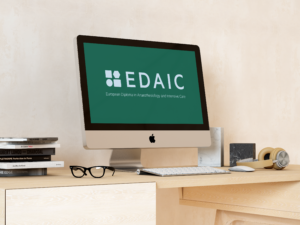Newsletter 2022
Newsletter March 2022: Editorial: A word of solidarity
Gabriel M. Gurman, MD
Chief Editor
The last days brought a tremendous burden on our Ukrainian colleagues and friends.
A wild war started and, as in any war, innocent people become victims.
The media is full of news about heavy fights all over that country, and many buildings, most of them inhabited by civilians, are bombed every single day.
Almost 1.5 million refugees left their homes and run away from the disaster, among them children and old people. They spent days and nights on their way to an unknown destination, just to be as far as possible from the mayhem.
Many of them need medical treatment, hospitalisation and surgery.
But the possibilities of treating them are meagre. News coming from the war zones inform about the lack of enough beds, paucity of drugs and equipment, and professional manpower shortage.
And, as in every war, the anaesthesiologists are on the medical frontline. They are supposed to prepare patients for emergency surgery, to anaesthetise them and to continue treatment and supervision after these medical emergencies.
In normal times, in normal places, these are part of our usual tasks, but in Ukraine today nothing is usual anymore.
At the same time, on the same continent, not too far away from the Ukrainian catastrophe life is quiet, patients are treated in accordance with modern guidelines, in well-equipped hospitals and operating rooms, supervised by qualified personnel.
I have no idea what can be done in order to alleviate the situation in that part of the world. It seems that we are far away from what was called, once upon a time, “blitzkrieg”. Most probably bombardments and killing will go on for weeks and maybe months, and nobody could know if and when peace would be re-installed in Ukraine.
European governments are supposed to offer help, by sending whatever is necessary for keeping the treatment of those affected by war at a minimal level.
Countries that have common borders with Ukraine already offer medical assistance to those refugees in need. Some field hospitals are to be soon set up in the vicinity of refugee camps.
It is not enough.
We, the European anaesthesiologists, must express our solidarity with the sufferance of the Ukrainian people and with our Ukrainian colleagues and friends, physicians, nurses, technicians who are facing a situation not encountered in Europe in the last 80 years.
I doubt that this paper would reach the Ukrainian anaesthesiologists, members of the European Society of Anaesthesiology and Intensive Care. They are too busy to find the time to open their computers and read our Newsletter.
So, my question is: how can we help them?
I can imagine that the routes to Ukraine are closed these days, with no chance to reach any of those medical facilities which need help.
But, at least, we can use our phones, call our colleagues, and when a human voice would be on the other side of the line, we can encourage and assure them that they are not left alone.
Also, the European medical institutions have to take into consideration the situation in which Ukraine will be after the end of the war. There will be a tremendous need for new equipment, renewed drug reserves, and also to create projects for the exchange of specialists and also for training the Ukrainian anaesthesia residents (one of whom features in this edition of our newsletter).
Last but least, our Ukrainian friends must know that they have not been left alone, that we think of them and are ready to help as much as our possibilities and the situation would permit.
I know, words do not help much, but I am confident that the time would come when we will be able to transform words into deeds.











